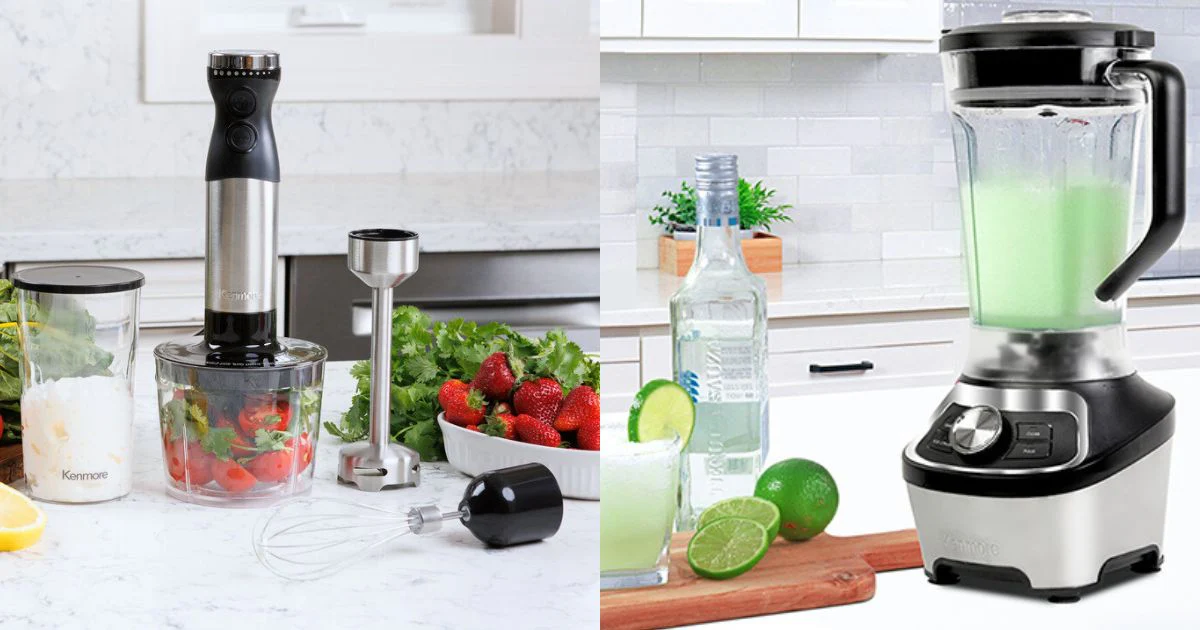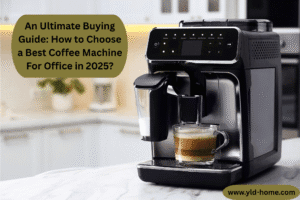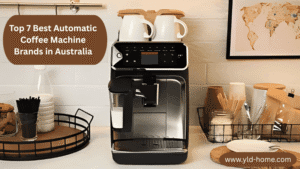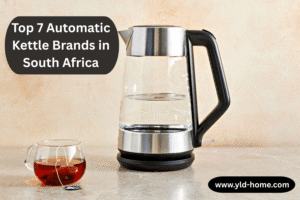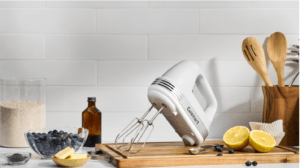Blenders are a key kitchen appliance that can simplify meal preparation, and boost culinary creativity. Stick blenders is also known as immersion blenders or hand blenders, and countertop blenders are among the most popular. Both are designed to blend, puree, and mix. But they have different designs, functions, and uses.
Stick blenders, which are small, portable devices, are ideal for quick and small tasks. They can also be used to blend directly into the cooking vessel. Countertop blenders, on the other hand, are stationary, larger appliances that have more power and capacity. They’re ideal for heavy-duty mixing and large batches.
In this blog, we will explore the differences will help you select the best blender for your needs and cooking style.
What is a Stick Blender?
Stick blenders, also called immersion blenders or hand blenders, are compact kitchen appliances that can be used to blend, puree, or emulsify ingredients in the container they will be cooking or serving. The stick blender’s elongated, slim design has a motorized handle at the end and is easy to use in cups, pots or bowls. It eliminates the need for transferring food into a separate blender. This saves time and reduces spillage during preparation.
Stick blenders can be used for a variety of quick tasks, such as blending sauces, pureeing soups or smoothies, and preparing baby foods. Some models include additional attachments, such as choppers or whisks, which enhance their functionality. They are lightweight and easy to maintain, making them ideal for people with limited space in the kitchen or those who want a portable blender. Stick blenders are still capable of delivering impressive results for your everyday cooking.
Pros and Cons of a Stick Blender
Stick blenders can be a great tool for small kitchens and quick blending. They may not be able to replace the power or capacity of a countertop mixer for more demanding applications.
Pros
- Compact and Portable: Stick blenders can be easily handled and stored because they are compact and lightweight. The stick blenders are compact and easy to store.
- Versatility: Stick blenders are versatile because they can blend food directly in pots or bowls. They also eliminate the need for transferring the food into a different container. Some models include attachments such as whisks and mini choppers to increase their functionality.
- Easy Cleaning: Stick blenders come with detachable blending arms that can be cleaned in the dishwasher or rinsed. They are a great option for a quick and mess-free solution.
- Affordability: Stick blenders tend to be more affordable than countertop blenders. This makes them a great option for anyone who needs a quick, easy tool for blending basic ingredients.
- Ideal for small tasks: These are great for jobs that require a quick solution, such as pureeing, making sauces or whipping cream in small amounts.
Cons
- Limited Power: Stick blenders have a lower motor power than countertop blenders. They are less efficient for tasks that require heavy duty, such as crushing ice and blending hard ingredients.
- Smaller Capacity: Stick blenders have a smaller capacity. They are not designed to blend large quantities or in high volumes.
- Manual Effort Required: You must exert manual effort to use a stick mixer. It is necessary to guide and hold it while you are operating. It can become tiring if you use it for a long time or do large tasks.
- Less Versatile Without Attachments: Stick blenders without attachments are less versatile. While they still work, their versatility is limited. These attachments can limit their abilities to pureeing and blending.
- Potential for Splattering: Improper mixing or high-speed mixing in shallow containers may cause splattering and a mess. To avoid this problem, it is important to use the right container and technique.
What is a Countertop Blender?
Countertop blenders are stationary kitchen appliances that can be used to blend, puree, or process a wide range of ingredients. The blender is made up of a motorized base with sharp blades on the bottom and a blending container. A countertop blender is known for its capacity and power. It can be used to make smoothies, milkshakes, crush ice or prepare soups. The larger size makes it perfect for blending large amounts, making it an essential in the kitchens of families and avid cooks.
Countertop blenders are often equipped with pre-programmed settings and multiple speed options. This allows users to create precise textures according to their recipes. These blenders are capable of handling tough ingredients such as frozen fruits, seeds and nuts. They also deliver consistent results. They require more counterspace and cleaning than stick blenders but their powerful performance and advanced features are essential for those who prepare high-volume or complex dishes.
Pros and Cons of a Countertop Blender
Countertop blenders can be a great choice for people who require a powerful and versatile appliance to handle larger quantities or more difficult blending tasks. Their size, cost and cleaning requirements might not be suitable for everyone.
Pros
- Powerful Performance: Countertop blenders are usually equipped with powerful motors that can exceed 1000 watts. They can handle difficult tasks such as crushing ice, blending fruits frozen, or making nut butters.
- Large Capacity: With their large jars and spacious blades, countertop blenders can prepare large batches of drinks, soups or smoothies. They are ideal for entertaining guests or families.
- Versatile Features: Many models have multiple speed settings, and functions pre-programmed for specific tasks, such as pureeing or pulsing. This versatility is ideal for a variety of cooking needs.
- Consistent Results: The blenders are able to produce consistent results, thanks to their powerful motors and robust blades.
- Durability: A high-quality countertop mixer is built to last. It has durable materials such as stainless steel blades, and a strong base that provides stability when in use.
Cons
- Bulky Design: Countertop blenders have a bulky design and take up a lot of counter space or storage. This is a disadvantage for those who have small kitchens and limited storage.
- Costlier: Countertop blenders with high performance can be costly, especially if they have advanced features. The cost of a high-performance blender may be justified if it is used frequently, but the investment can be significant.
- More Cleaning Effort: It takes more effort to clean a countertop mixer. This is because you have to wash the jar, lid and blades. Self-cleaning features are available on some models to help mitigate this.
- Less Portable: Countertop blenders are less portable due to their size and design. These blenders are ideal for kitchens that have enough space and a regular need to blend.
- Overkill for Small Tasks: A countertop blender is overkill for small tasks. It takes more time to set up and clean, and may not be as efficient.
Step-by-Step Guide Before Buying Stick Blender and Countertop Blender
Following these steps will help you to confidently choose the right countertop blender or stick blender for your lifestyle and culinary needs.
1: Understanding Your Culinary Needs
First, you need to decide how you will use the blender. Stick blenders are ideal for quick tasks such as pureeing soups or sauces. They can also be used to blend small batches in the pot. Countertop blenders are better for heavier-duty tasks such as crushing ice or blending large amounts. You can determine the best blender for you by identifying your primary purpose.
2: Budget your expenses
By setting a budget, you can find the blender that best suits your needs and not go overboard. Stick blenders tend to be more affordable. Basic models start at lower prices. Countertop blenders are available in a wide range of prices, from budget friendly options to more expensive high-performance models. Choose a range of prices based on the features and requirements you want.
3: Evaluation of Power and Performance
The motor power determines the effectiveness of the blender in completing different tasks. Stick blenders are usually between 200 and 500 watts. This is sufficient for light blending. Countertop blenders are often more powerful than 1000 watts and can crush ice or blend tough ingredients. You should consider the type of food you will be blending in order to determine the right motor power.
4: Check for Versatility
Depending on the model, both types of blenders offer different functionality. Stick blenders often come with accessories like mini choppers or whisks, which increase their versatility. Countertop blenders can have pre-programmed functions for making specific drinks, such as smoothies, soups or frozen drinks. These extra features can help you maximize your investment.
5: Size and storage
When choosing a blender, space is a key factor. Stick blenders can be easily stored and are small, so they’re perfect for smaller kitchens. Due to their size, countertop blenders require a dedicated space on the counter or in a cabinet. To ensure that the blender fits comfortably in your kitchen without clutter, measure your space.
6: Easy Cleaning
The ease of cleaning can have a significant impact on your daily routine. Stick blenders that have detachable arms are often dishwasher safe and easier to clean. Countertop blenders are dishwasher-safe, but require more work to clean the blade assembly, jar and lid. Select a blender that is designed to make cleaning easier.
7: Focus on Build Quality and Durability
Investing in a blender made from high-quality materials ensures longevity. Look for stainless steel blades and sturdy motors in both stick and countertop blenders. Countertop blenders should have a solid base to prevent wobbling during operation. Durability is particularly important if you plan to use the blender frequently.
8: Research Brand Reputation & Warranty
Brands that are trusted often offer reliable products and superior customer service. You can gauge the satisfaction of users by reading reviews and ratings. Check the warranty to make sure you are covered in the event of a malfunction or defect. Longer warranty periods often indicate greater confidence in a product’s quality.
9: Compare Features and Value
Compare models that are within your budget. Take into account the customer reviews, features and performance of each blender. Select the blender with the best blend of quality, value and functionality to meet your needs in the kitchen for many years.
Conclusion
Countertop blenders are more powerful than stick blenders, but they serve different purposes. Stick blenders blend directly into containers, without the need to transfer. They are portable and compact. Countertop blenders, on the other hand, offer greater power, versatility and capacity. They are therefore better suited for heavier-duty tasks or larger batches. The choice between the two blenders depends on your budget, cooking needs and kitchen space. By understanding their differences, you can select the best tool to enhance your cooking experience.
Most Asked Questions About Stick Blenders and Countertop Blenders
Q1: Can a stick blend replace a countertop mixer?
Answer: A stick blender can be used for quick, small tasks such as pureeing soups and making sauces. However, it does not have the same power or capacity as a countertop mixer. Countertop blenders are more efficient for heavy-duty jobs like crushing ice and blending large amounts.
Q2: Are stick blenders suitable for making smoothies?
Answer: Stick blenders are a great way to make smoothies. This is especially true if you want to prepare a single serving with soft fruit. They may have trouble with frozen fruit or ice, unless the motor is powerful.
Q3: What should I consider when purchasing a countertop mixer?
Answer: Consider motor power (at minimum 1000 watts) jar capacity, durability and ease of cleaning. Also, look for features such as preset programs. You should choose a blender that fits your needs and is compatible with the space in your kitchen.
Q4: Stick blenders are easier to clean than counter-top blenders?
Answer: Stick blenders can be cleaned more easily. The blending arms of most models can be removed and washed in the sink or put into the dishwasher. Countertop blenders can take longer to clean because they require the lid, jar and blade assembly.
Q5: Can countertop blenders handle hot liquids?
Answer: Many countertop blenders can handle hot liquids and are therefore suitable for blending sauces or soups. To avoid spills and accidents, you should always check the instructions of the manufacturer.

